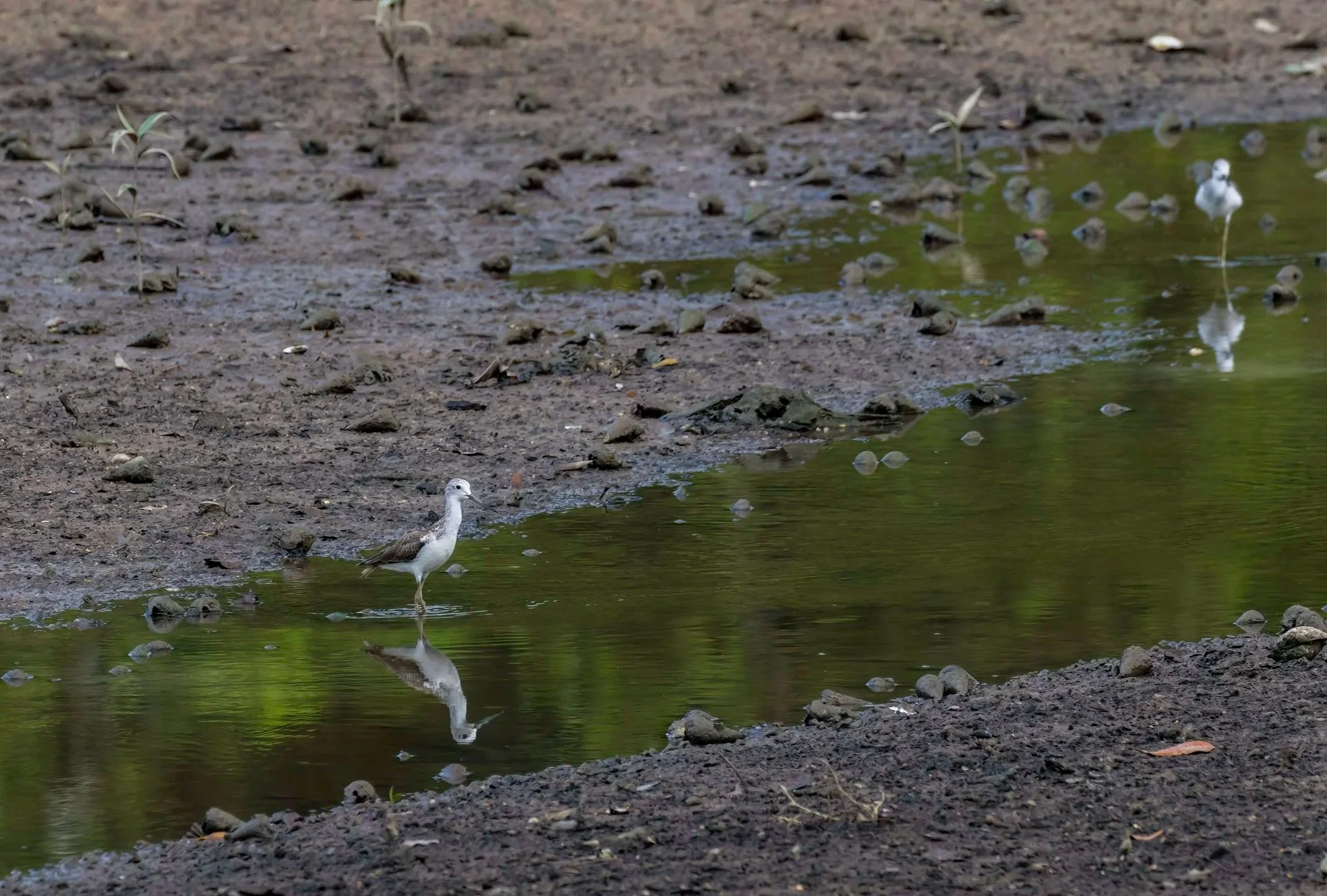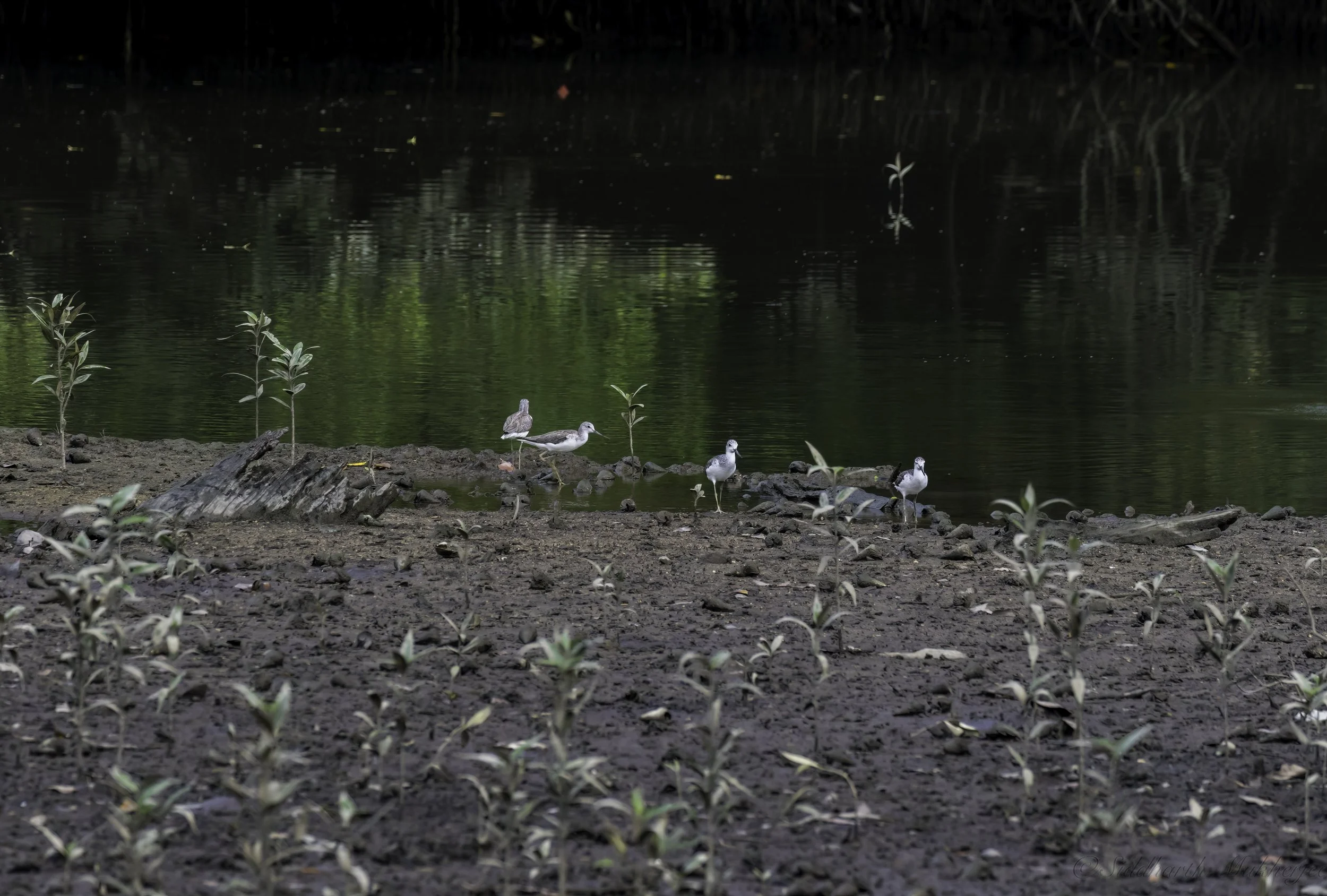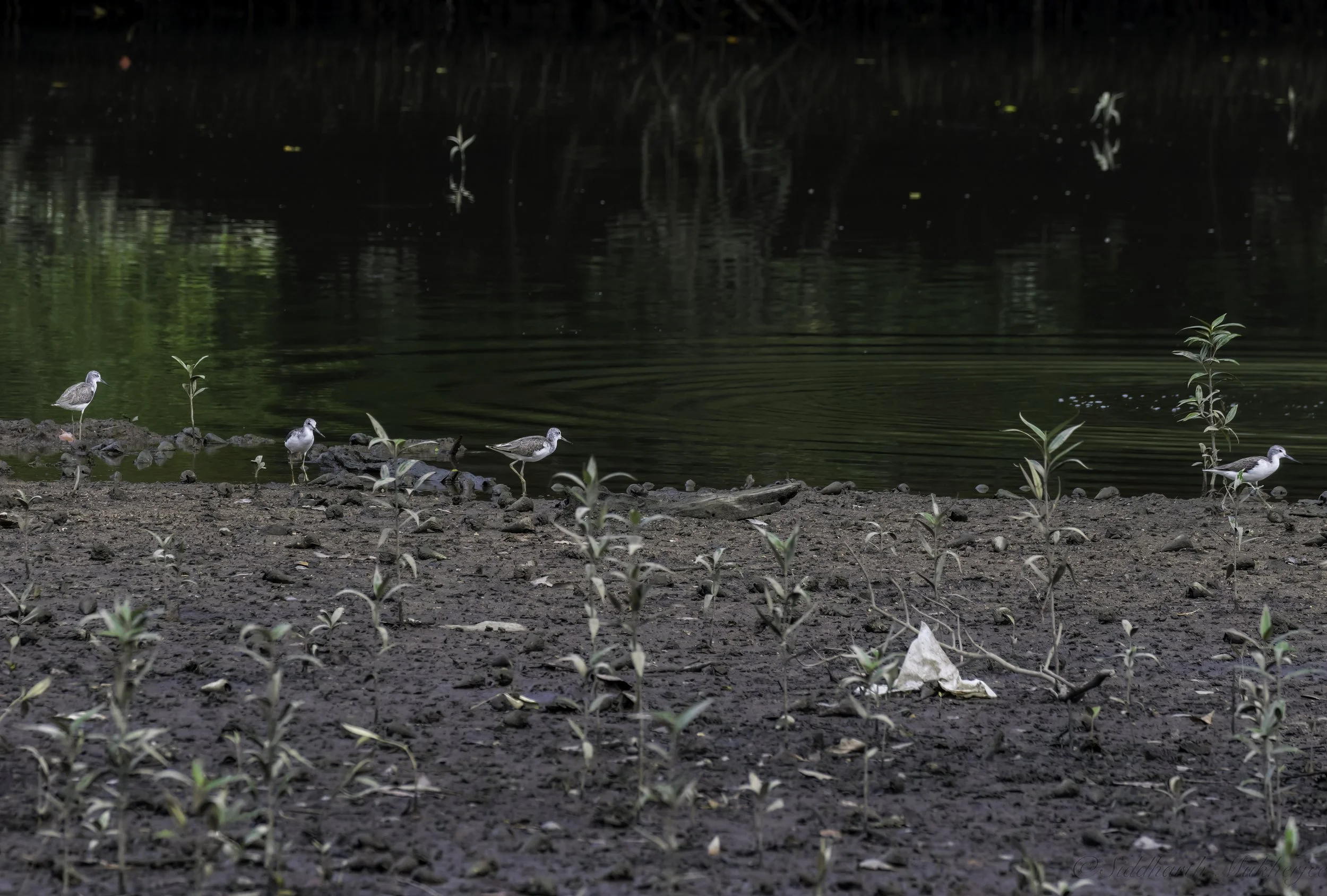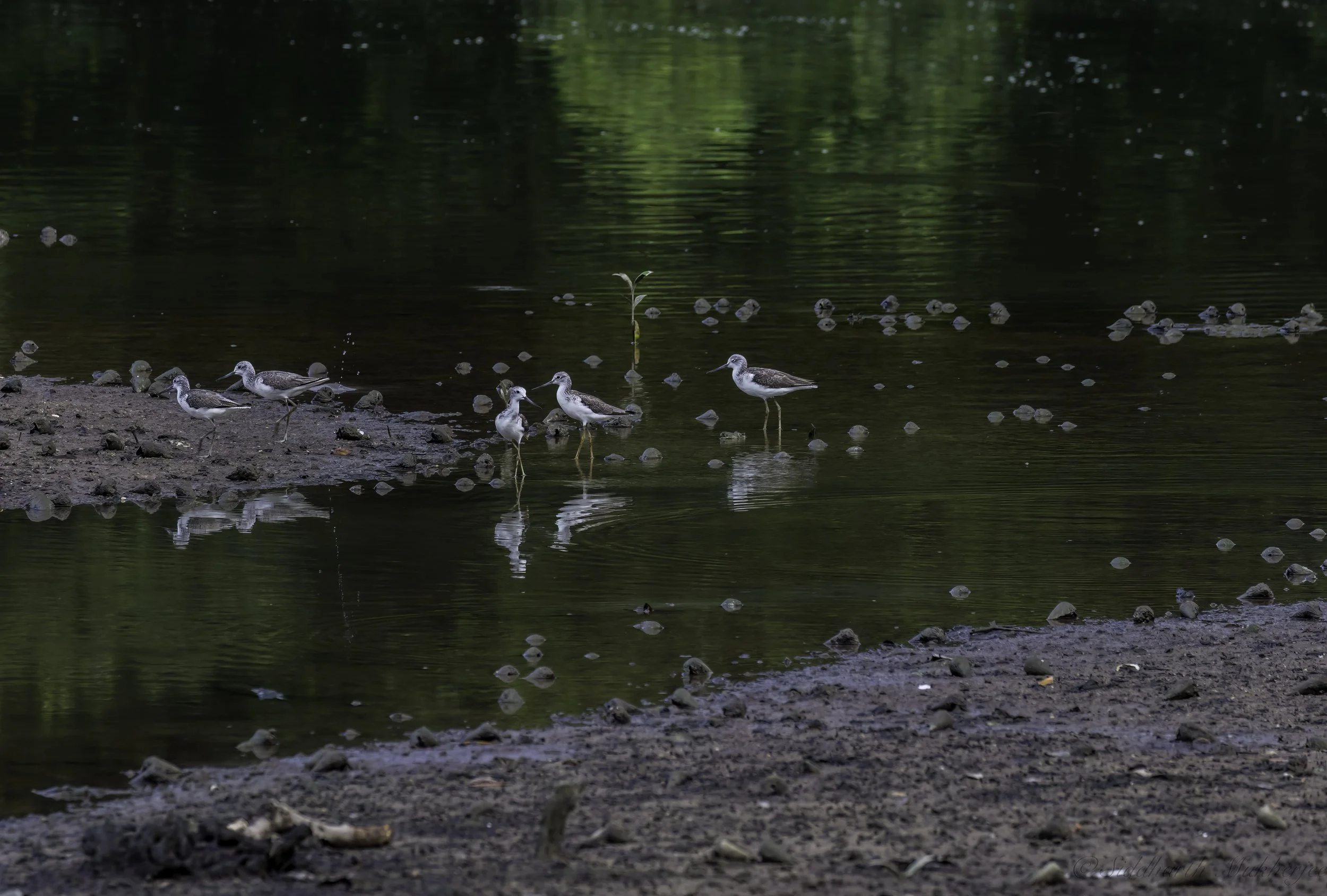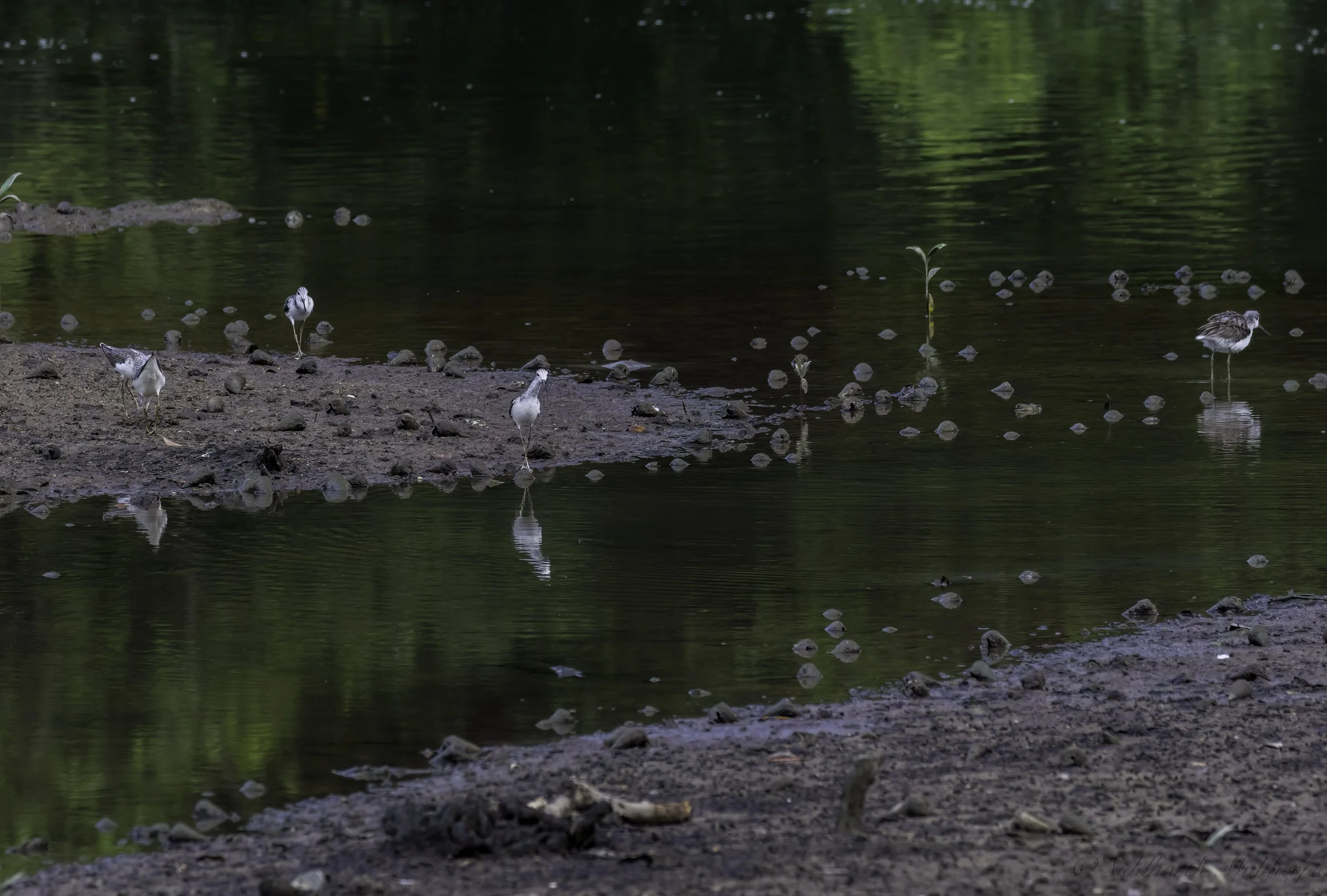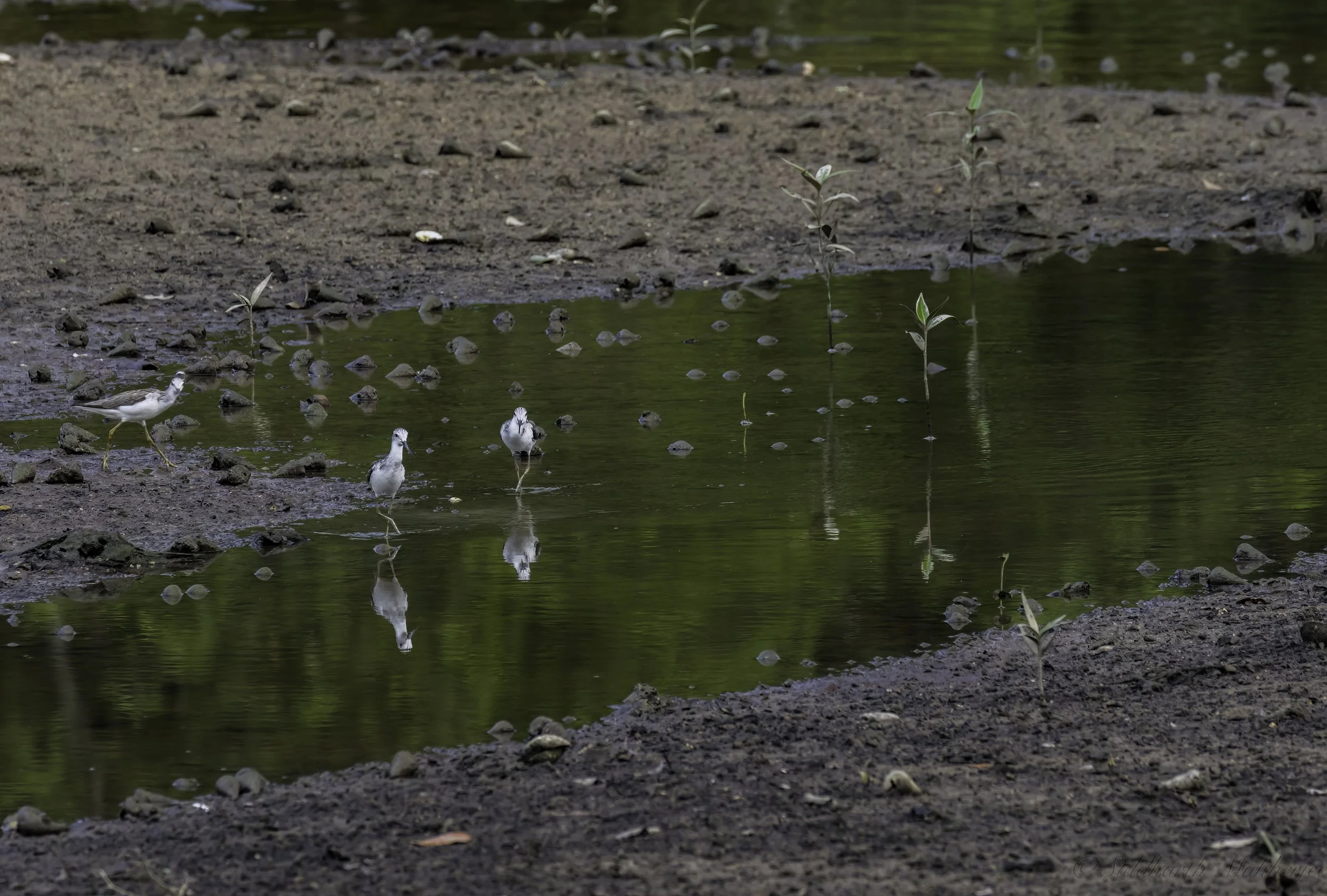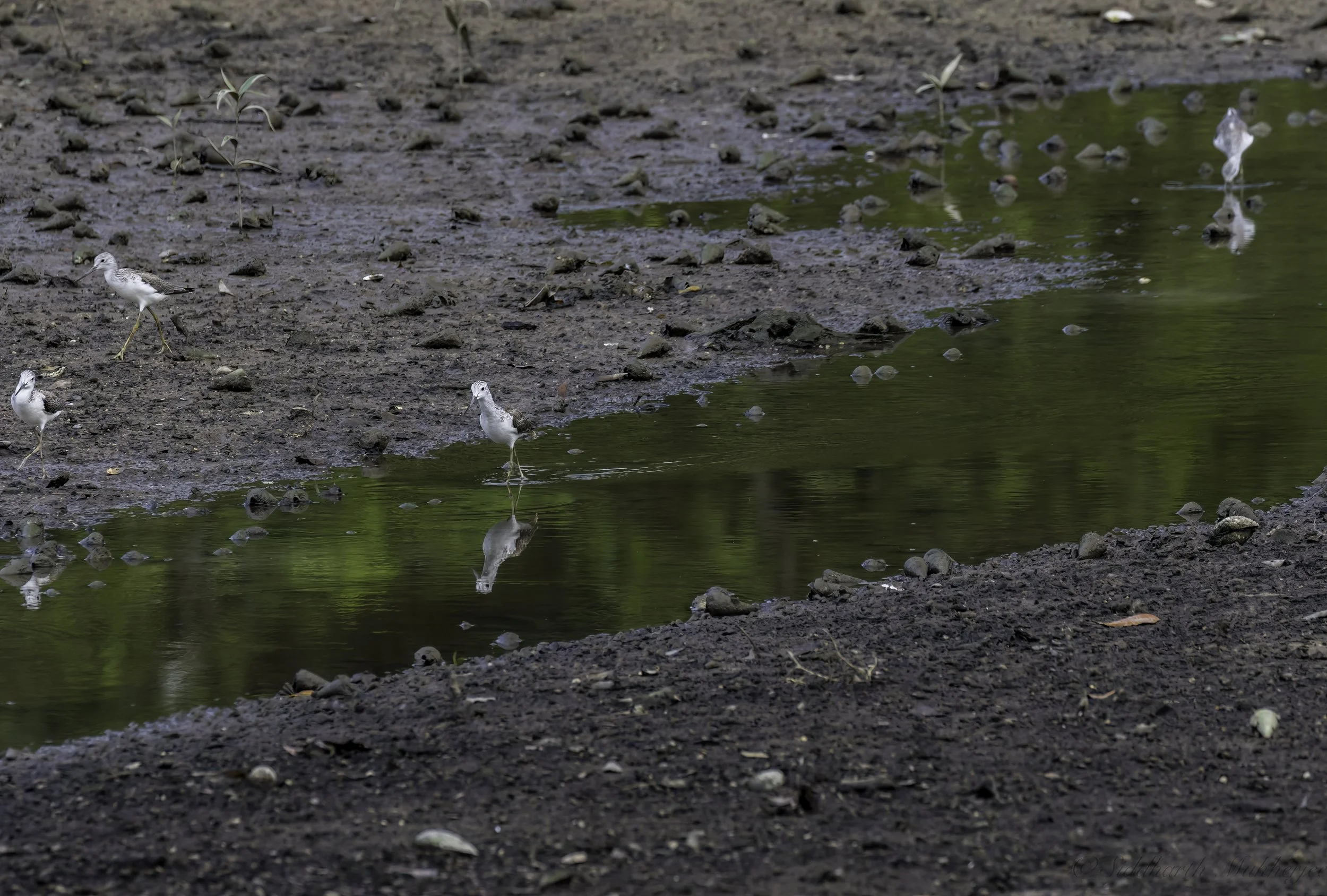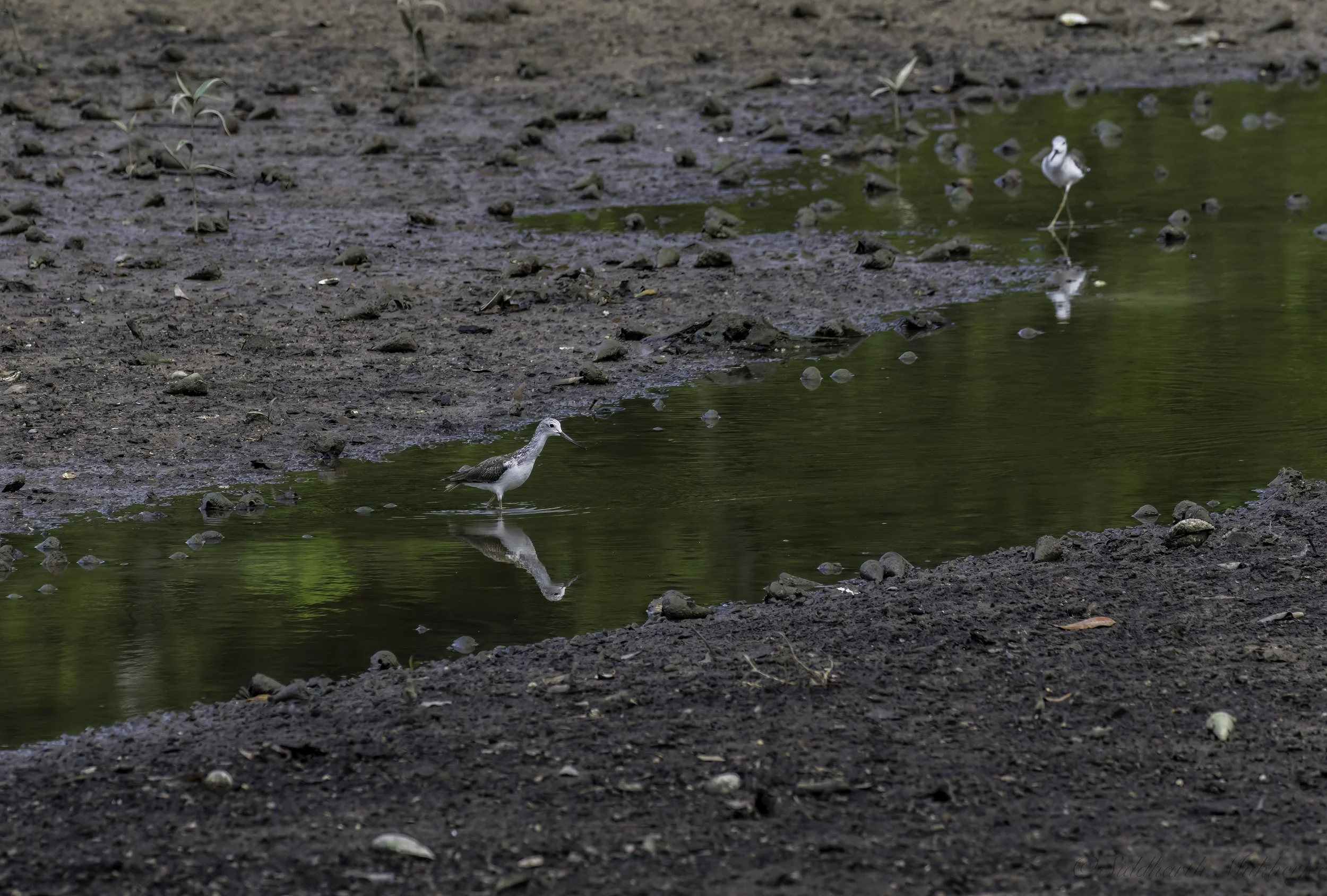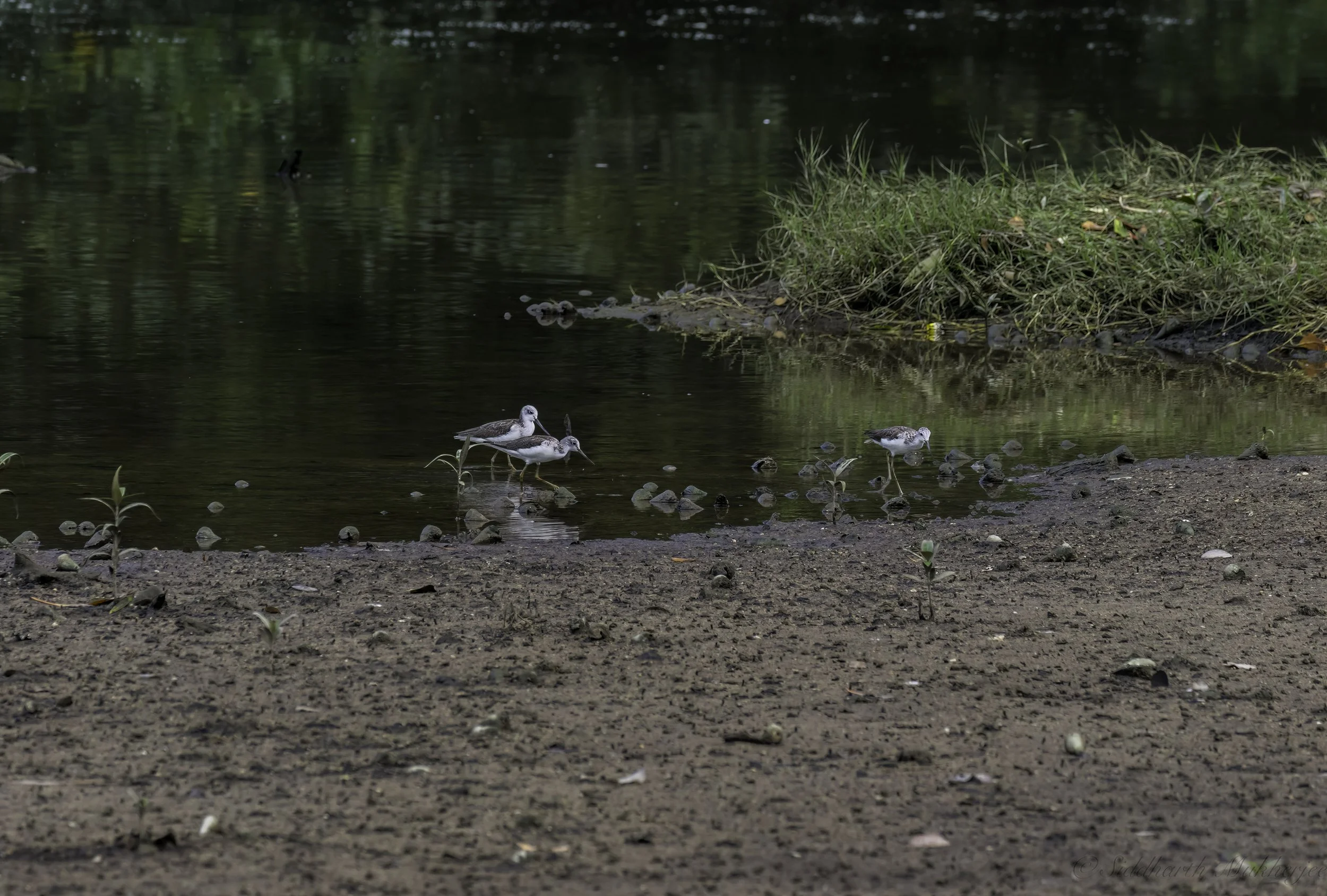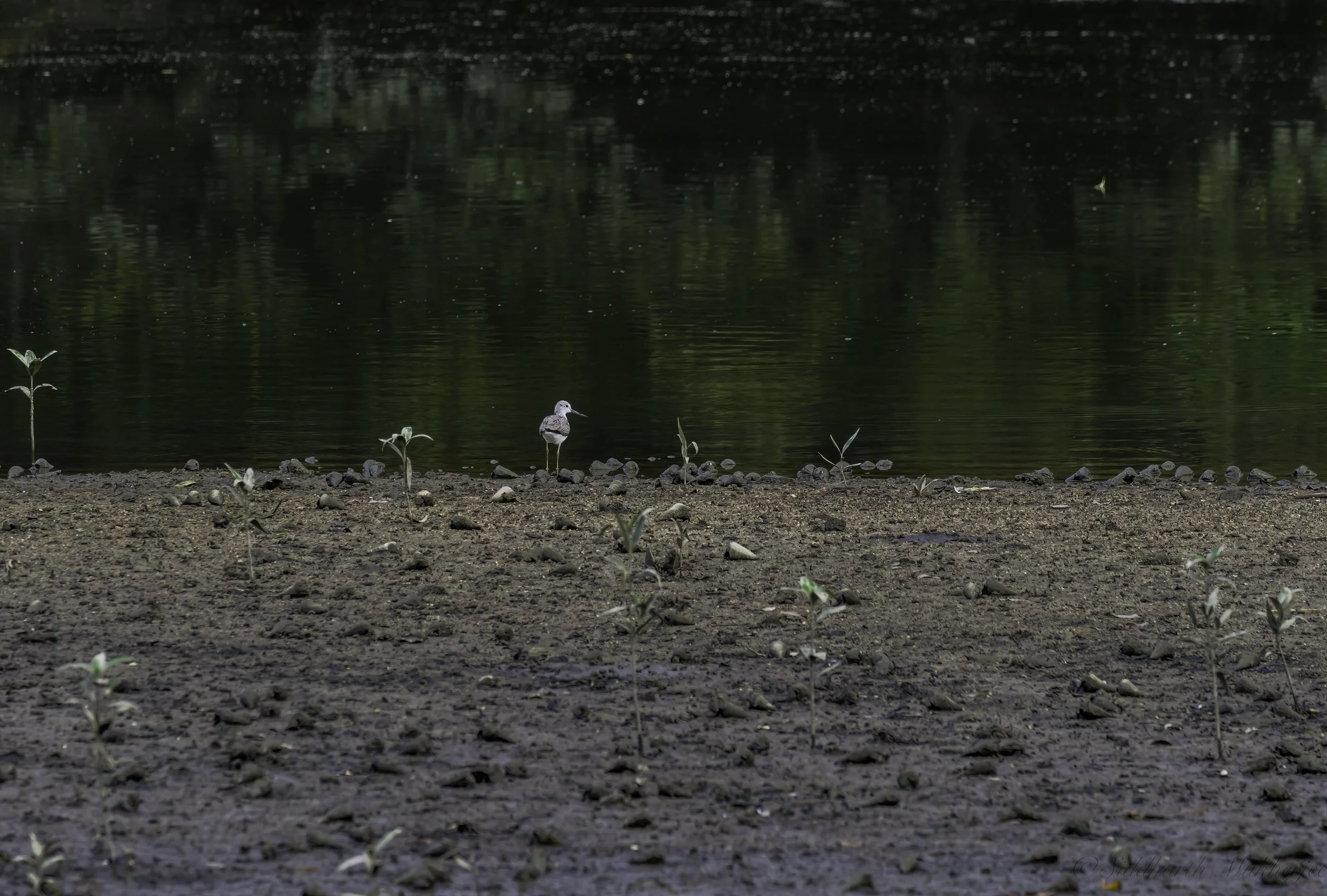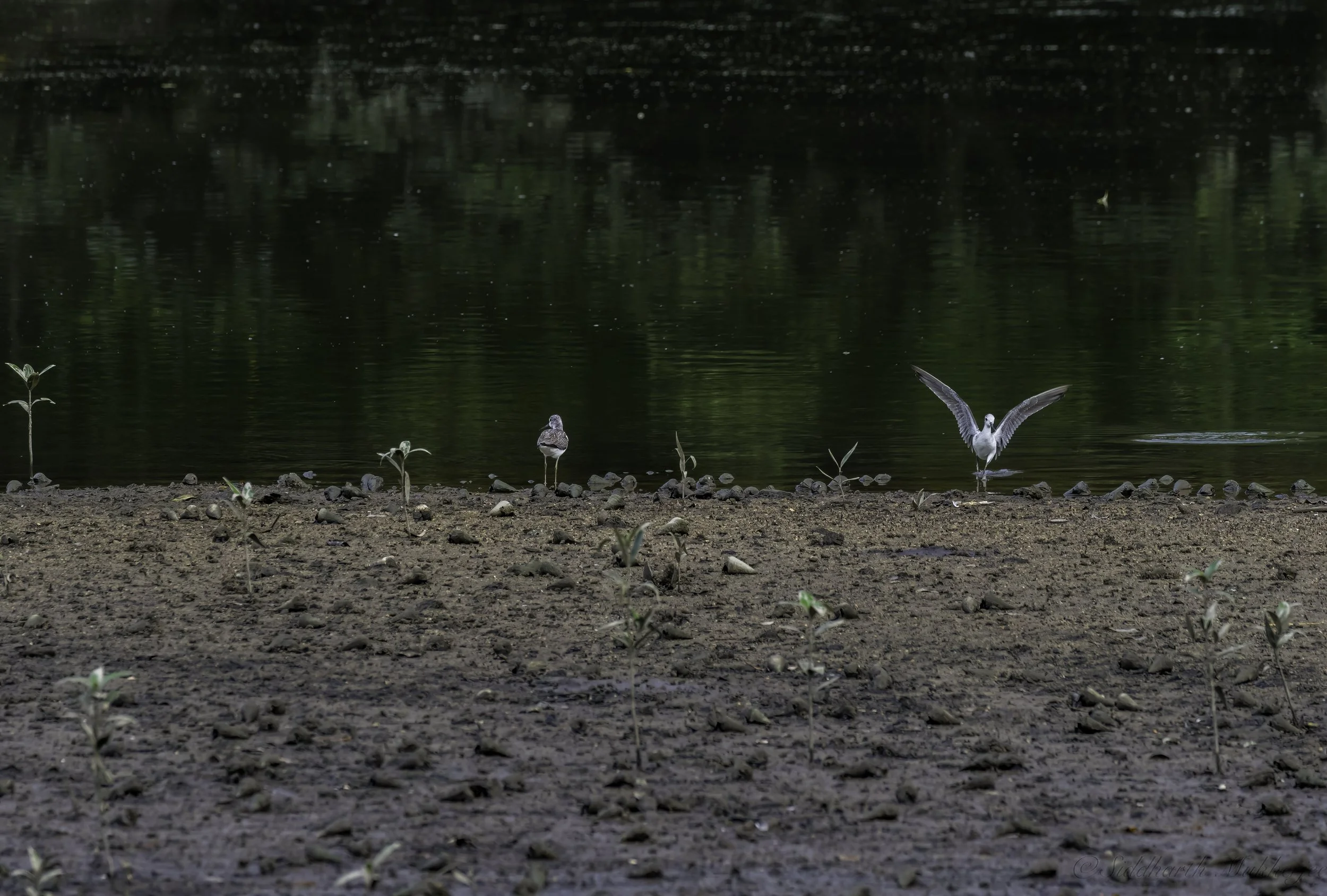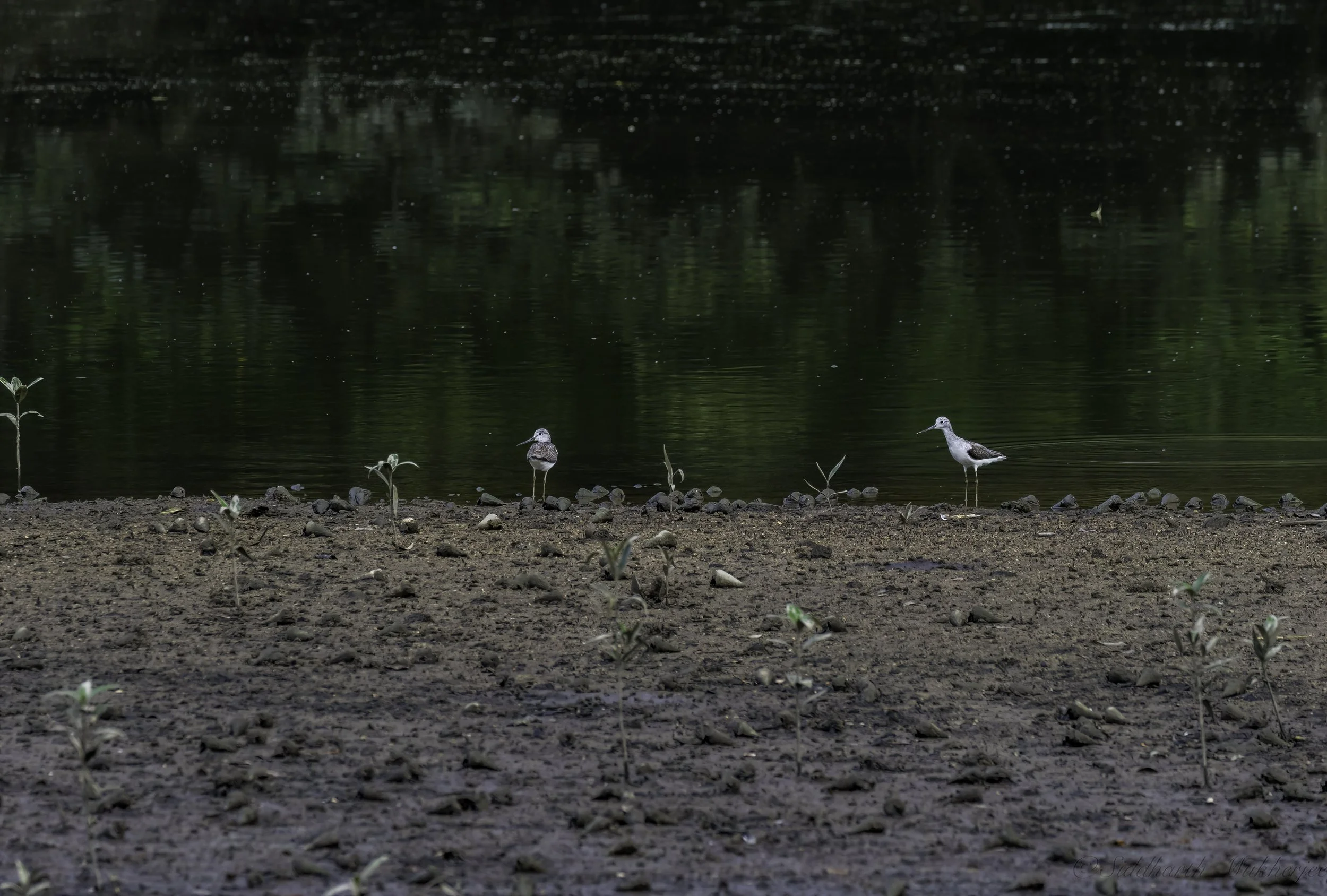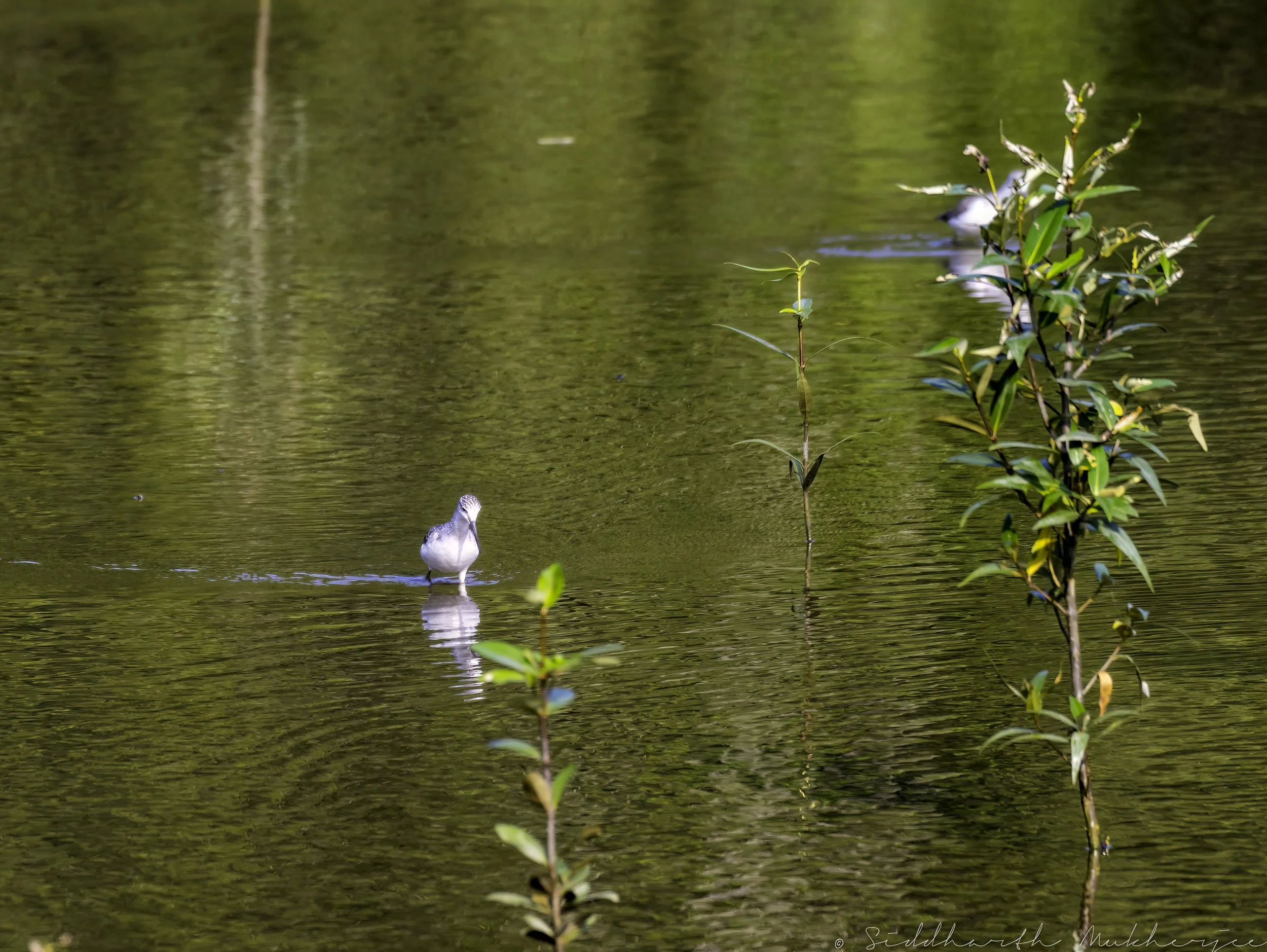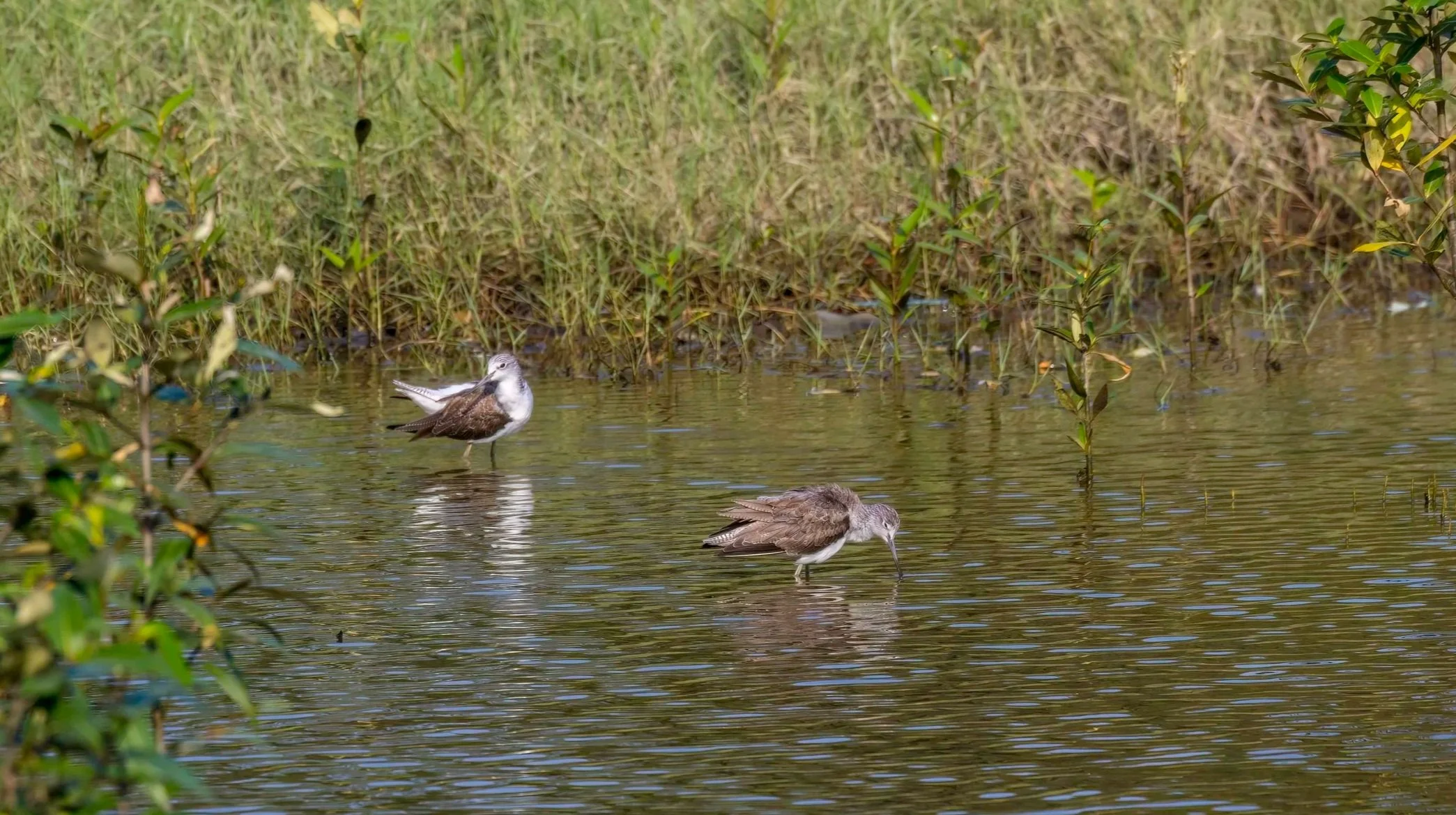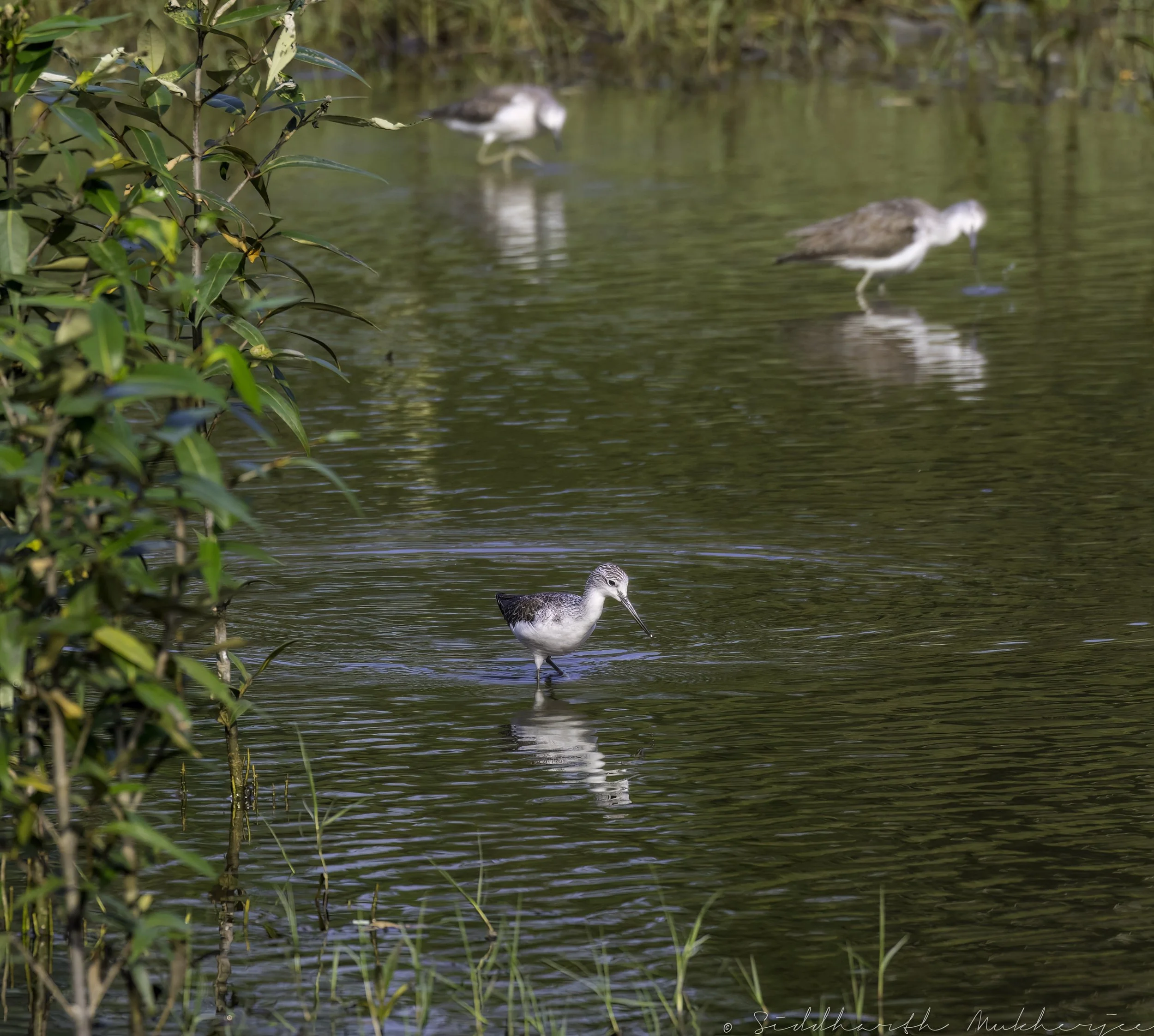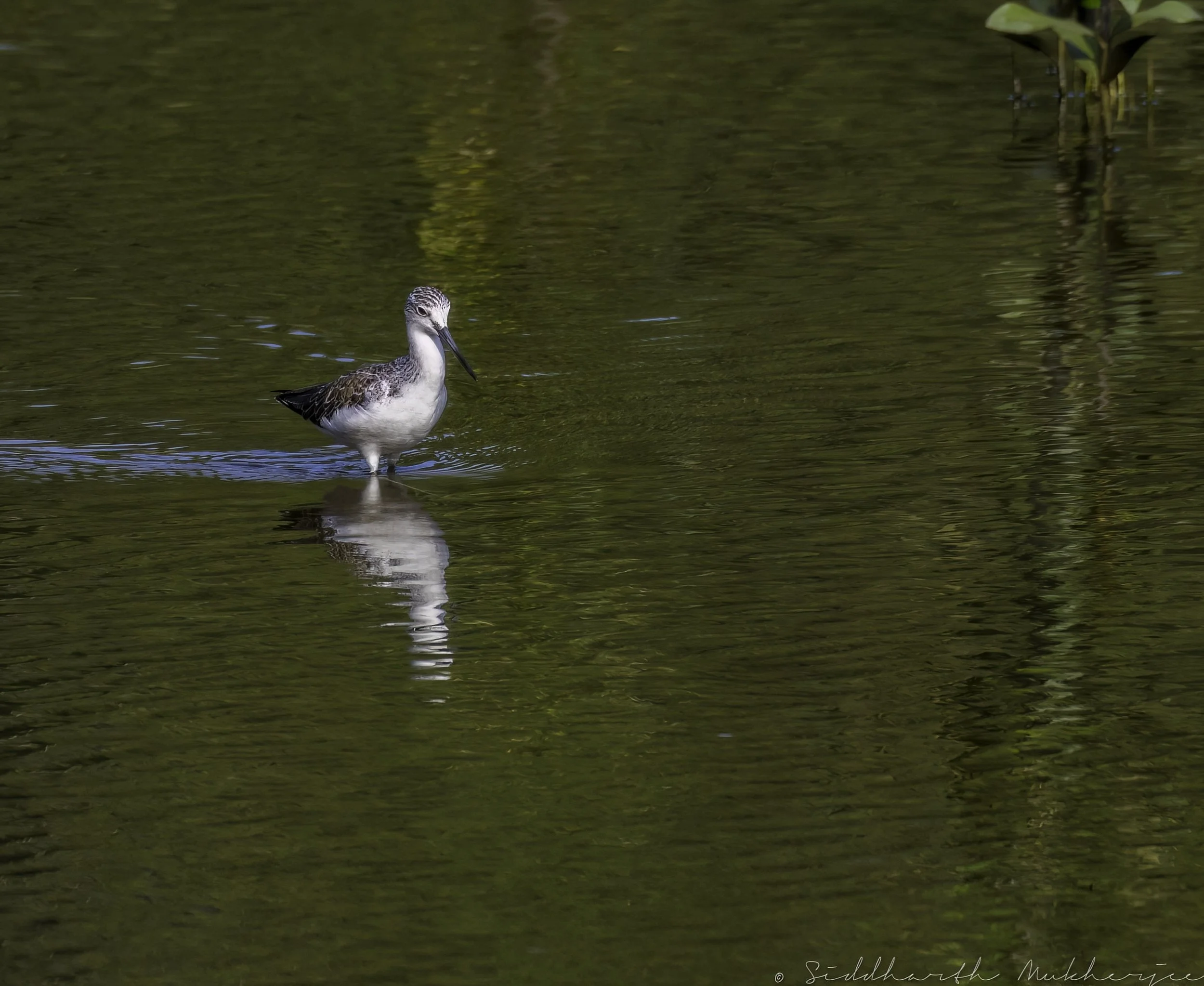Common Greenshank
Tringa nebularia
Sungei Buloh Wetlands
The Common Greenshank (Tringa nebularia) is a wader in the large family Scolopacidae, the typical waders. A gentle-eyed large wader with a slightly upturned bill, overall grayish plumage, a white belly and greenish legs. In flight, it appears dark above with a broad white stripe up the middle of the back. It is slightly larger and lankier than the Common Redshank and is usually seen in singles or small groups. It feeds mainly by striding in water, picking and sweeping with its bill and breeds across northern Europe and Asia; migrants and wintering birds in Africa, southern Asia and Australia occur in varied wetland habitats. I saw this beautiful wader for the first time in the Sungei Buloh Wetlands.
Sungei Buloh Wetlands
The Sungei Buloh Wetlands are a wetland nature reserve in the northwest area of Singapore. It is the first wetlands reserve to be gazetted in Singapore (2002), and its global importance as a stop-over point for migratory birds was recognised by the inclusion of the reserve into the East Asian Australasian Shorebird Site Network. The reserve, with an area of 130 hectares, was listed as an ASEAN Heritage Park in 2003. It is one of those natural forests that play a big part in creating an ecological balance in the region.
The site only gained prominence in 1986 when a call was made to conserve the area by members of the Singapore Branch of the Malayan Nature Society. Particularly significant was its unusually high variety of bird species, which included migratory birds from as far as Siberia on their way to winter in Australia. Their suggestion was taken up by the government, and a site with an area of 0.87 km² was given nature park status in 1989. The Parks & Recreation Department, a precursor to today's National Parks Board, developed and managed the nature park with a team of experts. The most notable names from the team included the Wildfowl & Wetlands Trust from the United Kingdom and World Wide Fund for Nature. Sungei Buloh Wetland Reserve, then known as Sungei Buloh Nature Park, was officially opened on 6 December 1993 by then Prime Minister Goh Chok Tong.
Among the many birds that can be spotted feeding on the diverse fauna variety of worms and molluscs, are the Eurasian whimbrel, common greenshank, common redshank, Mongolian plover, curlew sandpiper, marsh sandpiper and the Pacific golden plover, the yellow and the cinnamon bitterns. There is a resident family of smooth otters as well as the rare lesser whistling-duck, and the rare milky stork. The reserve forms part of the Kranji-Mandai Important Bird Area (IBA), identified as such by BirdLife International because it supports Chinese egrets, greater spotted eagles and greater crested terns. Atlas moth, the largest species of moth in Southeast Asia can be found in the back mangrove.
Observation hides are available where visitors can observe the flora and fauna in the surroundings in tranquility and at a distance from the animals and birds. Saltwater crocodiles (Crocodylus porosus) are occasionally seen in the reserve, although it is not known whether or not these are individuals that had wandered over from Malaysia/ Indonesia or a remnant localised population. (This species was once common in Singapore but was said to be extinct.). It is one of the four nature reserves to be gazetted in Singapore.
Common Greenshank
The Common Greenshank (Tringa nebularia) is a wader in the large family Scolopacidae, the typical waders. A medium-sized slim wader with a dark grey back and white underparts. Its green legs and slightly up-turned bill help to distinguish it from other waders. It calls regularly and is seen on its own and in small groups. The genus name Tringa is the Neo-Latin name given to the Green Sandpiper by Aldrovandus in 1599 based on Ancient Greek trungas, a thrush-sized, white-rumped, tail-bobbing wading bird mentioned by Aristotle. The specific nebularia is from Latin nebula "mist". Like the Norwegian Skoddefoll, this refers to the greenshank's damp marshy habitat.
The Common Greenshank is about 30–35 cm long and weighs between 125–300 grams with a wingspan of 68–70 cm. It is the largest Tringa (10–15% larger than the Common Redshank (Tringa totanus)) with long, robust, slightly up tilted bill and dull green legs. The upperparts are spotted and streaked black-brown, the lesser wing-coverts are browner. The head, neck and upper breast are streaked brown-black. In flight, it shows dark wings, a white back and rump. It is paler above than the Nordmann's Greenshank (Tringa guttifer) and the Greater Yellowlegs (Tringa melanoleuca), with longer legs than the former. Females average slightly larger. The non-breeding adult has feathers of the upperparts in a rather uniform grey, without dark markings. The breast, foreneck and face are white with stronger contrasting dark wing-coverts. The juvenile resembles the non-breeding adult but with browner upperparts with buff fringes and neck and the breast is somewhat more streaked.
The common Greenshank is monotypic distributed over Northern Scotland and Scandinavia East through Central Asia to East Siberia and Kamchatka. They winter from Western Europe through the Mediterranean to Africa, Madagascar, and East through the Middle East to South Asia, Indonesia and Australasia. It generally prefers the Taiga zone, in forest clearings, woody moorland or open bogs and marshes, including blanket bog; characteristic of northern and middle taiga. it breeds up to 1200 m in Northern Scandinavia and on migration, it occurs at inland flooded meadows, dried-up lakes, sandbars and marshes. It winters in a variety of freshwater and marine wetlands, including estuaries, sandy or muddy coastal flats, saltmarshes, mangroves, swamps and lakes. It is also spotted on artificial wetlands, such as sewage farms, dam lakes, saltworks and inundated rice crops; less often on open coast and sometimes along quiet stretches of rivers.
The common greenshank is mostly migratory, though some populations move only short distances, with for example small (but increasing) numbers wintering as far north as Britain and France. They migrate overland on a broad front, but the largest numbers pass through coastal sites. The movements over Europe are mainly South South West–South West, with evidence from Germany that spring migration is advancing in recent decades, while timing of autumn passage appears more variable, in response to both climatic conditions in breeding areas and nesting success. Most Palearctic birds are trans-Saharan migrants. Some non-breeders remain in the South all year. The Spring migration is more direct, without large coastal concentrations, with birds departing Mauritania between mid April and early May. Birds from Russia wintering in Africa are presumed to cross East & Southern Europe. In East Asia, they pass through the Kuril Islands, Commander Islands, Korea, Japan, NE China and New Guinea, mainly to coastal North Australia. The females start South migration in late June, but most adults arrive in the Wadden Sea in Jul, followed by juveniles in August. They arrive in South Africa and Australia August–September, and begin North migration as early as March, with those in South Africa departing with sufficient fat to sustain single flights of up to 5700 km. Their arrival in W Australia may perhaps be followed by movement towards E & S; numbers in SE Australia continue to increase until March. There are vagrant to various oceanic islands, such as Crozets and Kerguelen, in the Indian Ocean; and New Caledonia, in the Pacific, as well as being recorded in North America, in Alaska (regular in spring, very rare in autumn, with most records in W Aleutians), California (two autumn records) and E Canada (May, Sept–Oct), Bermuda, Barbados (seven records, Oct–Apr) and South America, in French Guiana (Feb).
The Common Greenshank feeds both diurnally and nocturnally and chiefly on insects and their larvae, especially beetles, but also crustaceans, annelids, molluscs, amphibians and small fish. It is also reported that they feed on rodents. They can be usually seen pecking and probing in shallow water walking with steady pass, sometimes running with erratic changes of direction. When feeding on fish they may forage socially in dense flocks of conspecifics or mixed with other tringines, moving erratically while pecking at prey or running synchronously in one direction, ploughing or scything their bill through the water, and using dash-and-lunge technique to seize larger fish. They are seen singly, or in small to large flocks of up to 100s.
Their song comprises of a sustained, richly modulated and quickly given “too-hoo-too-hoo” series, with the first note of each couplet descending and the second ascending, mostly given in flight display in which male ascends to at least 60 m (occasionally up to 300 m), then rises and falls repeatedly, gliding and circling on fixed, bowed wings. Most frequently heard and often given on flushing, is a clear ringing “tew” or “tyu”, often uttered up to three times, with the last note usually falling in pitch, but sometimes singly or even up to six times especially around the nest. They also have an incessantly and rapidly repeated, loud, staccato “chip-chip-chip...” in the breeding season, although speed and volume can be variable, which is given during territorial disputes, when guarding young or when attacking predators.
They lay their eggs late April to mid June in NW Europe and are usually monogamous (occasionally a pair-bond survives more than one season), though some males are bigynous. There is a high degree of site fidelity, but no natal philopatry. In Scotland, territory occupancy averaged 52%, with strong variation between years (20–91%) and territories (24–78%) in one study. The densities vary from 1·4–10 birds/km of riverbed (R Yenisey). The nest is a shallow scrape (10–12 cm wide by 4–6 cm deep), created by the male, lined with some plant material and a few feathers, on the ground and in the open, typically placed next to a piece of dead wood, rock, log or tussock, exceptionally among tall trees within sparse woodland. They occasionally re-use the same depression in subsequent season. The clutch is four eggs (3–5), with a laying interval of 30–72 hours, off-white to buff or even bluish green, with red and chocolate-brown markings, and a mean size of 51·4 mm × 34·8 mm. Single brood; incubation is 24 days (22–26), by both sexes, but mainly female and males with two mates normally do little incubation, starting with final egg. The chick is pale grey marked above with fuscous black, a white belly. Often one parent (typically female) leaves the brood before fledging which takes 25–31 days. On average, 59–74% of eggs hatch, 32% of hatchlings fledge, with 62% of nest failures being accounted for by predation in one study. Age of first breeding unknown, but some return to breeding grounds as one-year-olds.
The Common Greenshank is not globally threatened and is classified as Least Concern. In Europe and W Africa probably several 100,000s of birds, although only 25,000 actually counted in coastal Europe and W Africa (of which up to 5000 in Niger). In E Africa and SW Asia probably c. 100,000 birds. In SC Asia probably c. 25,000 birds; in E & SE Asia and Australasia c. 20,000 birds each, of which c. 5000 winter in N Western Australia, with the total E Asian flyway population recently being estimated at 55,000 individuals, of which in excess of 20,000 use the Yellow Sea as a spring stopover area. Like most shorebirds migrating along this flyway, reclamation and development projects, especially in China and Korea, pose significant and ongoing threats. Scotland currently holds at least 1090 breeding pairs (1995). Fennoscandia 50,000–90,000 pairs (1993) including 15,000–20,000 pairs in Sweden, 15,000–30,000 pairs in Norway and 25,000–40,000 pairs in Finland; locally abundant on Russian breeding grounds. Projected levels of climate change could have severe effects on the breeding grounds of this species. Probably bred formerly as far S as Slovenia and may breed in Ukraine. Overall population considered secure due to extensive breeding range.
‡‡‡‡‡
Related Posts

